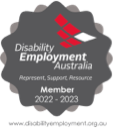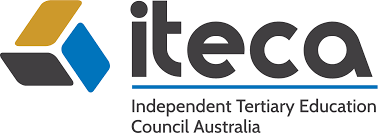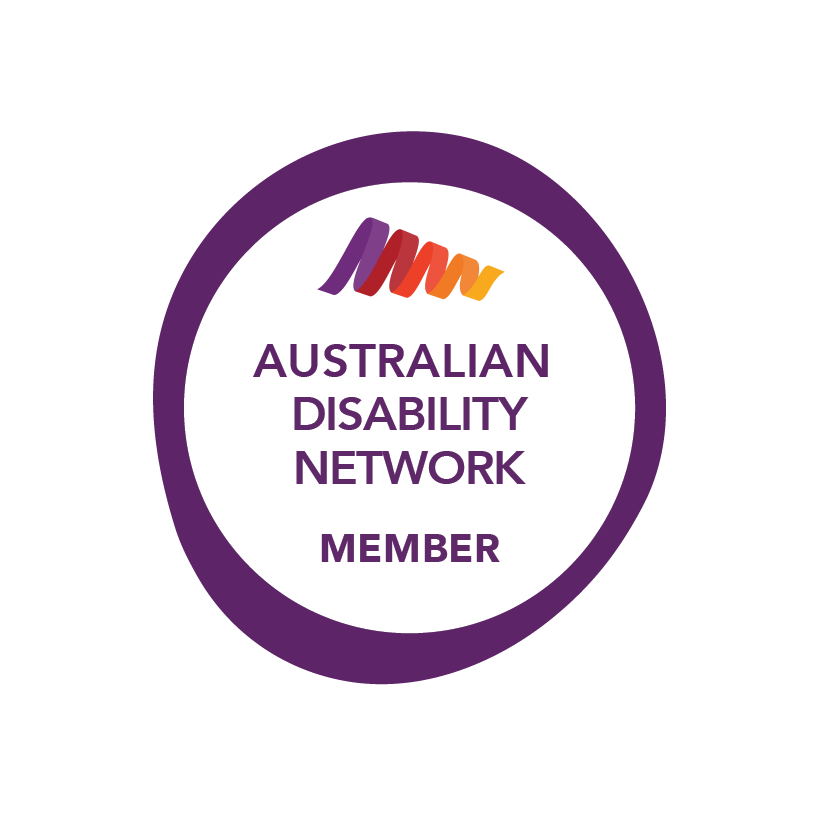Preparing for a job interview involves more than just practising your answers. Knowing what to bring to a job interview is equally important to ensure you leave a strong, professional impression. Having the right items on hand not only helps you stay organised but also shows potential employers that you are well-prepared and serious about the opportunity.
Essential Documents
Having the right documents with you can set the tone for a smooth and organised interview. Here’s a list of must-have items:
Copies of Your Resume
Even if you’ve already submitted your resume, bringing several printed copies is a smart move. The interviewer might not have one on hand, or there may be additional people attending the interview. Having a few extras ensures you are prepared for any scenario.
Portfolio or Work Samples (if applicable)
For roles that require showcasing your work—such as in creative, technical, or trade industries—bringing a portfolio or relevant work samples can give the interviewer a deeper understanding of your skills and experience.
Cover Letter (if requested)
Some employers may ask for a cover letter to accompany your application. It’s always a good idea to have a printed copy ready, even if it hasn’t been explicitly requested, as it shows professionalism and thoroughness.
Reference List
While some interviews may not immediately ask for references, having a printed list of professional contacts who can vouch for your abilities can be valuable. If the employer wants to check your references quickly, you’ll be ready to provide them on the spot.
Photo ID
A photo ID, such as a driver’s licence or passport, may be required for building access or identity verification. Some companies may need to confirm your identity before the interview or when processing documents, so having this handy is important.
Work Authorisation Documents
If you’re a non-citizen or require special work authorisation, bring any relevant documentation, such as a visa or work permit. Employers may need to confirm that you’re eligible to work, especially if you’re a successful candidate.
Having these documents ready not only prevents unnecessary delays but also showcases your preparedness and professionalism.
Personal Items to Enhance Comfort
Staying comfortable and focused during an interview is key to performing well. Bringing a few personal items can help you feel more at ease and ensure you’re prepared for minor inconveniences.
Water Bottle
A small water bottle can help keep you hydrated and alert, especially if you’re nervous. Take small sips before the interview to stay refreshed, but ensure it’s put away before the actual meeting starts.
Breath Mints or Gum
Fresh breath is always a good idea before meeting someone new. Breath mints can be helpful, but avoid chewing gum during the interview, as it can appear unprofessional.
Tissues
Carrying a few tissues is practical in case of an unexpected sneeze or spill. They’re small and easy to keep with you, but can be incredibly useful in maintaining your comfort and professionalism.
These small personal items may seem minor, but they contribute to your overall comfort and ability to focus during the interview.
A Positive Attitude and Confidence
While not a physical item, your attitude is one of the most important things you can bring to a job interview. How you present yourself emotionally can have a lasting impact.
A Smile and Confidence
Walking into the interview with a positive attitude, confidence, and a genuine smile can set the right tone. Confidence shows that you believe in your abilities, while a friendly and open demeanour makes you approachable and memorable.
Body Language Matters
Non-verbal cues, such as maintaining eye contact, sitting up straight, and offering a firm handshake, can communicate confidence and enthusiasm. Positive body language reinforces your verbal responses, showing that you’re engaged and focused.
Bringing a positive attitude and confidence helps to create a strong first impression and can make a significant difference in how the interviewer perceives you.
Final Preparation
Being prepared for a job interview goes beyond practising your answers. Knowing what to bring to a job interview ensures you’re fully equipped to handle anything that comes your way and leaves a professional impression. From essential documents and practical items to the right attitude, each element plays a role in how you present yourself to a potential employer.
By making a checklist and preparing ahead of time, you reduce the risk of forgetting something important, boosting your confidence as you walk into the interview ready to land that job.
Need further assistance with your job search?
At Tursa Employment and Training, we provide tailored support to help you succeed in your employment journey. Whether you need help preparing for interviews, building your resume, or finding the right opportunities, our team is here to guide you every step of the way.
Contact us today to get started!
Growing and Learning from the Job Search Process

The job search process can be a challenging and emotional journey, filled with highs and lows. One of the most difficult experiences is facing rejection, particularly when it’s a generic email or complete silence after you have spent so much time working on your resume and crafting the perfect application letter. But what if you could turn rejection into an opportunity for growth and learning?

What can you learn from rejection
Rejection can prompt you to reflect on your application materials, interview skills, and overall approach. Identify areas for improvement and work on developing your strengths. It can also help you consider finding out more about the companies you apply with. Places like Glassdoor or SEEK provide insight into what employees both past and present leave in business reviews. This can give you a deeper insight into the culture of the organisation you are applying to and management style. Always be aware that quite often only staff wishing to complain use these sites so look for companies that have a balance of reviews for a more informed decision.

Discovering Company Culture

Resilience and Perseverance

Use rejection as an opportunity to learn, grow, and refine your approach. Seek feedback, analyse and adjust, seek companies that respect the process and stay positive and open-minded. Practice self-care.

A resume summary statement is a brief paragraph at the top of your resume highlighting your skills, experience, and qualifications. It's a great way to make a solid first impression on hiring managers and recruiters, and it can help you stand out from the competition. This article discusses why your resume should have a summary statement and a step-by-step guide on how to write one.
Reasons why you need a resume summary statement
As mentioned, summary statements are a great way to stand out and find employment. Here are some examples of reasons your resume should have a summary statement:
- It gives hiring managers a quick overview of your skills and experience.
- It helps you tailor your resume to specific job openings.
- It shows that you’re a proactive and motivated candidate.
- It can help you get your foot in the door for an interview.

Here's a step-by-step guide on how to do a resume summary:
- Start by brainstorming a list of your skills, experience, and qualifications.
- Think about the specific job you’re applying for, and identify the skills and experience that are most relevant to the position.
- Write a brief paragraph that highlights your most relevant skills and experience.
- Use strong action verbs and specific examples to quantify your accomplishments.
- Proofread your summary statement carefully to make sure it’s free of errors.
Resume summary statement example:
Experienced administrative professional with a proven track record in efficiently managing office operations. Skilled in coordinating schedules, organising documents, and providing excellent customer service. Dedicated and detail-oriented with strong communication and problem-solving abilities. Committed to supporting team productivity and ensuring smooth workflow. Seeking an administrative role where I can contribute my expertise and contribute to the success of the organisation.
How to write a summary statement on a resume
Writing a resume summary can be tricky at first, but now you know what to do, you can have a go. But, when writing a summer statement, you’ll want to keep the following in mind:
- Keep it brief
- Be specific
- Use strong and active language
- Proofread carefully

1. Keep it brief
Aim for your resume summary to be about 10-15% of the original content’s length. For instance, for a 1000-word document, aim for a 100-150 word summary. Identify the core ideas or arguments. Exclude examples, detailed descriptions, or supporting data unless they are crucial to understanding the main point.
2. Be specific
Use concrete and precise language. For instance, instead of saying “many people,” specify an approximate number if known. Only include details that contribute directly to the main point. Avoid side points or tangential information.
3. Use strong and active language
Prefer active voice over passive. For example, “The team achieved the goals” is better than “The goals were achieved by the team.”
Use assertive language. Avoid qualifiers like “might” or “could” unless they are essential to the accuracy of the statement.
4. Use strong and active language
Double-check for factual correctness. Misrepresenting data or the argument can change the meaning of the summary.
Ensure that tense, person, and number are consistent throughout. After checking for errors, read the summary to ensure it’s easy to understand. It should be coherent and flow logically.
A well-written resume summary statement is a valuable asset to any job seeker. These tips will assist you in writing a summary statement to help you stand out from the competition and land your dream job. Check out some other great tips on how to make your RESUME jump.
Recruiting is constantly evolving, which puts job seekers in need of keeping up with the latest trends. In the past, resumes were a one-size-fits-all document that included a variety of sections, such as a career objective, a list of skills, and a summary of qualifications. However, today's recruiters are looking for something different. They want to see resumes that are specific to the job they are hiring for, and that highlight the candidate's skills and experience in a way that is easy to understand. When you spend the time completing a well-written resume there are some resume sections you can leave out.
Hot Resume Tips
Here are some resume sections that you can safely leave out in 2023.
Here are a few examples:
- Career objective: This section is outdated and unnecessary. Recruiters can already tell what you’re looking for by reading your resume.
- Skills section: This section can be repetitive and redundant. Instead, highlight your skills throughout your resume in the context of your work experience.
- Summary of qualifications: This section is often too long and doesn’t provide new information. Instead, use a strong resume header to introduce yourself and highlight your skills.
- Awards and honours: This section is only relevant if the awards and honours are directly related to the job you are applying for. Otherwise, it can take up valuable space on your resume.
- References: References can be provided after an interview, so there is no need to include them on your resume.
By leaving out these unnecessary resume sections, you can free up space to highlight your skills and experience in a way relevant to the job you are applying for. As a result, your resume is more likely to get noticed by recruiters and increase your chances of landing your dream job.
If you are registered with Services Australia and are looking for an organisation that can support you in getting prepared for the workforce consider getting referred to TURSA. Our experienced team helps you prepare including developing your resume to help you secure your next job. Contact us today!
A resume is a document that summarises your work experience, education, and skills. Potential employers use it to assess your qualifications for a job. A well-written resume can help you land your dream job, while a poorly written resume can hurt your chances of getting an interview. Here are some do's and don'ts of resume writing:
Here are some do's and don'ts of resume writing
Resume Writing Do’s
- Tailor your resume to the specific job you are applying for. Read the job description carefully and highlight the skills and experience that are most relevant to the position.
- Use keywords throughout your resume. When you apply for a job online, your resume will likely be scanned by an applicant tracking system (ATS) for keywords relevant to the position. Ensure to include keywords throughout your resume so that a human recruiter will see your resume.
- Use strong action verbs. When describing your work experience, use strong action verbs to highlight your accomplishments. For example, instead of saying, “I was responsible for managing a team of 10 people,” say, “I led a team of 10 people to achieve a 15% increase in sales.”
- Quantify your results. Whenever possible, quantify your results. For example, instead of saying, “I increased sales,” say, “I increased sales by 15%.” As a result, hiring managers will understand the impact of your work.
- Use white space. A well-formatted resume is easy to read. Use white space to break up your text and make your resume more visually appealing.
- Proofread carefully. Typos and grammatical errors will make you look unprofessional. Make sure to proofread your resume carefully before submitting it to potential employers.
Resume Writing Don’ts:
- Don’t use a template. While resume templates can be a useful starting point, don’t use a too generic template. If you use a template for your resume make sure it is unique to you and your qualifications.
- Don’t lie or exaggerate. It is essential, to be honest and accurate on your resume. Lying or exaggerating your skills or experience will only hurt you in the long run.
- Don’t use too much jargon. Jargon is a technical language specific to a particular industry or field. If you use jargon on your resume, ensure the hiring manager will understand it.
- Don’t use all caps. Using all caps is considered shouting and is unprofessional.
- Don’t use a lot of colours or graphics. A resume should be easy to read. Avoid using too many colours or graphics, as they can make your resume difficult to scan.
- Don’t put your social media handles on your resume. Social media can be a great way to connect with potential employers, but putting your social media handles on your resume is inappropriate.
TURSA can help!
We offer a range of FREE support services to help you find and keep employment
Our services include:
- Job search assistance
- Resume writing and interview skills training
- Employment preparation workshops
- Access to a range of employment programs
- And more!
To find out more about our services, please contact us today.
We are here to help you succeed!

Tursa Employment & Training acknowledges the traditional owners and custodians of country throughout Australia and acknowledges their continuing connection to land, water and community. We pay our respects to the people, the cultures and the elders past, present and emerging.













